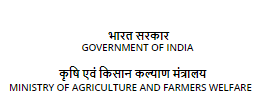Rice variety: Pusa Basmati 1637
Background:
Pusa Basmati 1 occupies an area of 1.083 lakh hectare (~ 7.14 % of the total area under Basmati
rice cultivation) of areain Basmati growing region of India during Kharif 2018 (APEDA, 2019).
However, this variety is highly susceptible to blast disease which causes significant yield and
quality losses. Annually fungicides worth Rs. 50-60 crores are being used to control blast disease
on Basmati. However, with the recent restrictions imposed by the European Union on the use of
tricyclazole for managing blast disease, management of this disease has been a challenge in
Basmati rice.
Pusa Basmati 1637 is an improved Basmati rice variety in the genetic background of Pusa Basmati
1, which is a popular Basmati rice variety developed at ICAR-Indian Agricultural Research
Institute, New Delhi. It is characterized by possess long slender grains (7.3 mm) with very
occasional grain chalkiness, very good kernel length after cooking (13.8 mm), intermediate
amylose content (22.8 %) and strong aroma. In the panel test, Pusa Basmati 1637 exhibited flaky
appearance, tenderness on touching and chewing, desirable taste and optimum aroma with good
elongation and overall acceptability. Therefore, Pusa Basmati 1637 offers an effective
replacement for Pusa Basmati 1 in these Basmati growing regions of India.
Technology Details:
Pusa Basmati 1637 is an improved neck blast resistant version of Pusa Basmati 1 which carries
the blast resistance gene, Pi9. The agro-morphological, grain and cooking quality characters of
Pusa Basmati 1637, are at par with the popular variety, Pusa Basmati 1. Replacement of Pusa
Basmati 1 with the Pusa Basmati 1637 would significantly reduce the use of fungicides in
managing the blast disease thereby making the production of Basmati rice adhering to the norms
fixed by European Union for export of Basmati rice.


